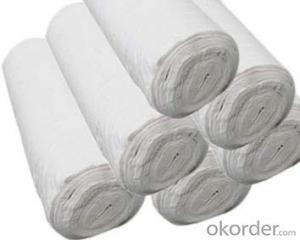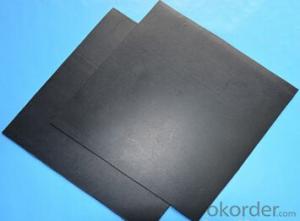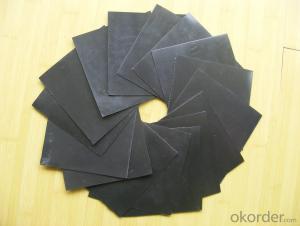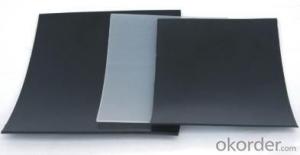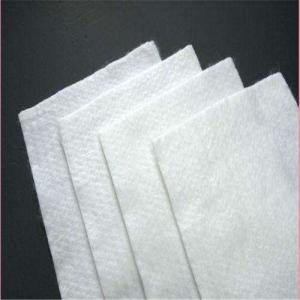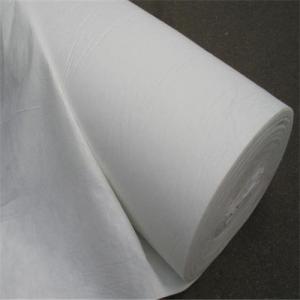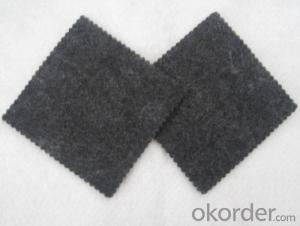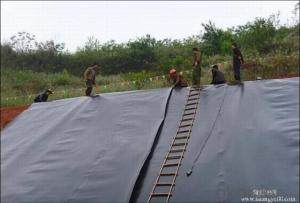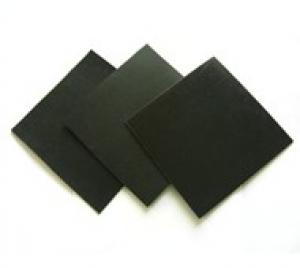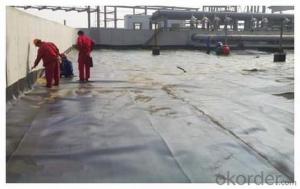Impermeable Geomembrane Polyester Nonwoven Geotextile for Road Construction
- Loading Port:
- Qingdao
- Payment Terms:
- TT OR LC
- Min Order Qty:
- 10000 m²
- Supply Capability:
- 500000 m²/month
OKorder Service Pledge
OKorder Financial Service
You Might Also Like
Structure of Polyester Nonwoven Geotextile Description:
Polyester Short fiber needle nonwoven geotextile is a new type of construction materials which is defined to use in construction projects. The main roles of geotextile include filter, water treatment materials and georeinforce. Materials. Needled staple fiber geotextiles show excellent filtration effciency, isolation, reinforced protective effect, high tensile strength, good permeability, high temperature resisting, anti-freezing, anti-aging, corrosion resistance.
Main Features of Polyester Nonwoven Geotextile:
1.Separation
The isolation of the railway dregs and the roadbed, roadbed and the soft base, surface of the airdrome and parking lot and the groundsill, different dam materials. It isolates the soil and the gravel of two kinds different
granule pathway from the groundsill or other buildings.
2.Reinforcement
The highway, railway, soil-stone dam, breakwater, airport, backfill soil of retaining wall, slope protection, etc in which distributes the earth stress, prevents the side-displacement of the earth body and improves the earthbody stability.
3.Protection
It prevents the bank from being washed out, protects the bank and the
bottom, prevents the water and soil from being washed away
Polyester Nonwoven Geotextile Images
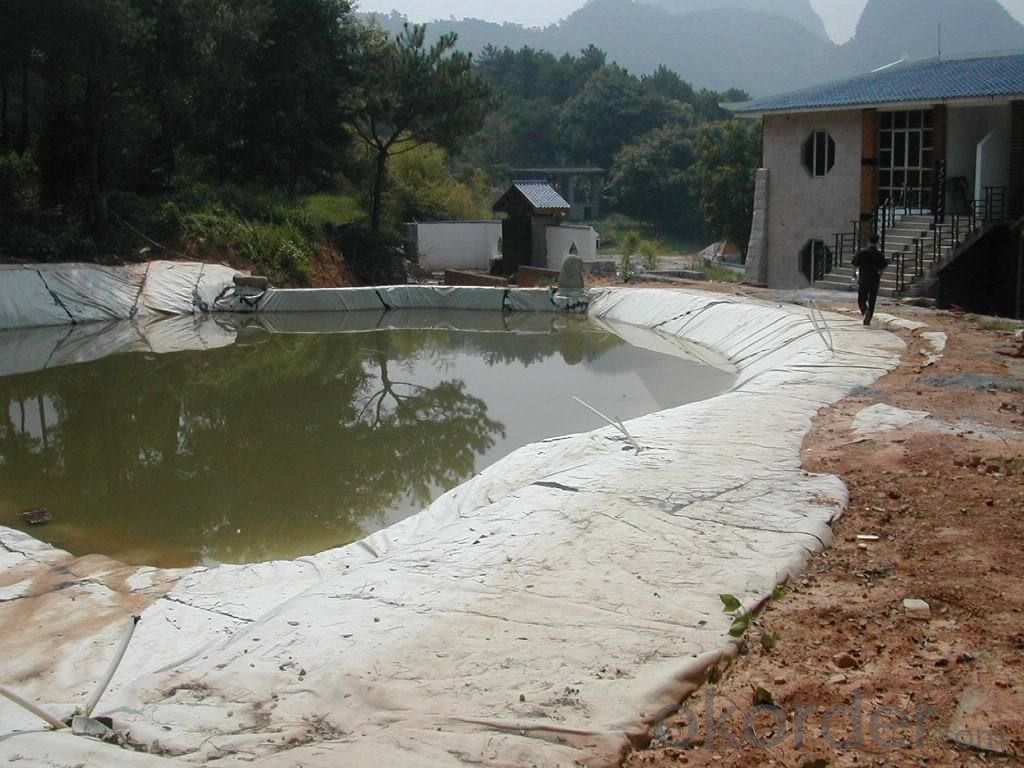
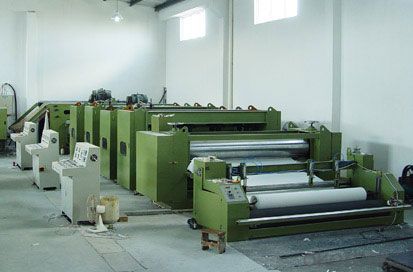
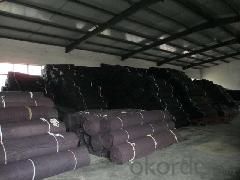
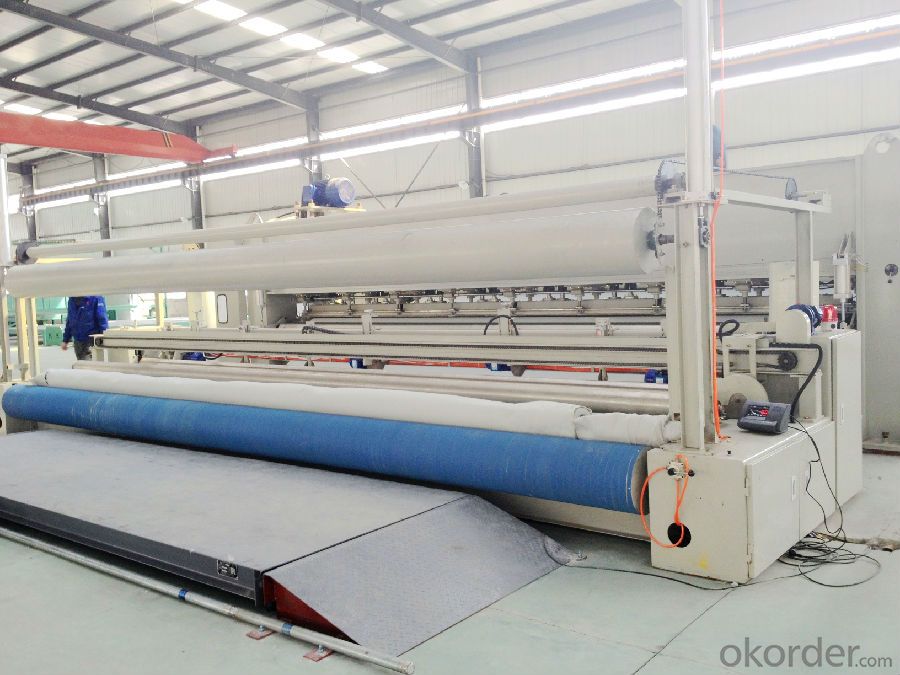
Polyester Nonwoven Geotextile Specification:
No | Project | Index | ||||||
1 | Breakage Strength KN/m≥(MD) | 20 | 30 | 40 | 50 | 60 | 80 | 100 |
2 | Breakage Strength KN/m≥(CD) | 15 | 22 | 28 | 35 | 42 | 56 | 70 |
3 | Elongation Rate (MD,CD) ≤ | 28 | ||||||
4 | Trapezoidal Tearing Strength | 0.3 | 0.45 | 0.5 | 0.6 | 0.75 | 1.0 | 1.2 |
5 | Burst Strength KN≥ | 1.6 | 2.4 | 3.2 | 4.0 | 4.8 | 6.0 | 7.5 |
6 | Vertical Permeability Coefficient cm/s | 10-1~10-3 | ||||||
7 | Sieve size(O95) mm | 0.08~0.5 | ||||||
8 | Unit weight g/m2 | 120 | 160 | 200 | 240 | 280 | 340 | 400 |
9 | Thickness mm | 0.40 | 0.48 | 0.60 | 0.70 | 0.80 | 1.00 | 1.25 |
10 | Variation % | ±10 | ||||||
FAQ
We have organized several common questions for our clients,may help you sincerely:
Q1: How about your company?
A1:Our company are one of the largest geosynthetic products supplier in the world.We have the products experience more than 20 years.Already export to USA/Germeny/Australia/Zambia/Brazil etc.more than 20 countries.Almost 10years.Our products including Geocell/Fiberglass Geogrid/Geomembrane/Geotextile/Geonet etc.
Q2:Can you send samples to us ?
A2:Yes , free samples could be provided , but customer need pay for the freight cost .
After order placed , the freight charge could be refund .
Q3:What’s your Payment term ?
A3:T/T , L/C , Western Union,Paypal ...
Q4:What’s your manufacture process time ?
A4:Usually within 20 days
- Q: Which one has lower cost between geomembrane and composite geomembrane?
- The cost of geomembrane of equal weight is higher than that of composite geomembrane, geomembrane texture HDPE, composite geomembrane texture LDPE+PET, the current market price HDPElDPE difference, PET is cheaper than HDPE
- Q: Can geomembranes be used in water reservoirs?
- Yes, geomembranes can be used in water reservoirs. They are often used as liners to prevent water leakage and contamination in reservoirs, providing an effective barrier against seepage and protecting the surrounding environment.
- Q: Can geomembranes be used for landfill capping?
- Yes, geomembranes can be used for landfill capping. They are often used as a barrier to prevent the infiltration of rainwater and the escape of gases from the landfill, providing a reliable and effective solution for capping landfills.
- Q: What is the construction method of the geotechnical membrane?
- The construction method: To lay it in the range of measurement. To lay the composite geotechnical membrane before the first required to lay a good sand cushion on the roadbed, laying the width of the design requirements set. When laying, do not allow the laying of folds, as far as possible to tighten. After the pavement, the U type nails or bamboo nails is used to fix. When laying composite geotechnical membrane, the surface of the sand layer is smooth, no hard protrusion, and timely fill sand cover, avoid direct exposure to the sun for a long time. When the composite earthwork film is laid, the length of the transverse lap and the longitudinal lap can meet the design requirements. After the composite geotechnical membrane is rolled out, the filling material is filled up in time, and after the soil is covered with light compaction mechanical compaction, only when the thickness of the overburden layer is larger than 0.6m, the soil can be compacted by heavy compaction machine. Composite geotechnical membrane according to the design requirements can be divided into two types of longitudinal force and lateral force, the laying of composite soil before the film to understand the design intent, strictly according to the design requirements of the laying.
- Q: How do geomembranes perform in high temperature gas containment applications?
- Geomembranes are highly effective in high temperature gas containment applications. They are specifically designed to withstand extreme temperatures and maintain their structural integrity. These membranes have excellent thermal stability, allowing them to resist deformation or degradation even in harsh conditions. Additionally, they possess superior gas barrier properties, preventing any leakage or permeation of gases. Overall, geomembranes offer reliable and efficient performance in high temperature gas containment applications.
- Q: What do geomembrane 200/ 20/ 20 mean?
- 2 & # 47, ditch; 200, the interjacent plastic film is 0, reservoirs. The total gram weight of this product is 600g / ㎡, which is one of composite geomembranes, identifing that the geotechnical cloth on the top side and the bottom side of this kind composite geo-membrane is 200g & # 47.2mm thick;㎡ around, which is often used in the artificial lake seepage-proofing. Geomembrane and composite geomembrane manufacturers; 0, general watercourse, should be 200 & # 47
- Q: Is the new crystal steel door film expensive?
- The price of the new crystal steel door film is relatively modest.
- Q: What are the considerations for geomembrane selection in agricultural irrigation systems?
- When selecting a geomembrane for agricultural irrigation systems, several considerations need to be taken into account. These include the type and quality of the soil, the water source and its chemical composition, the climate conditions, and the specific requirements of the irrigation system. Additionally, factors such as durability, flexibility, puncture resistance, and compatibility with other components of the system should also be considered. Ultimately, the selected geomembrane should be able to effectively prevent water leakage, minimize evaporation, and withstand the demands of agricultural irrigation.
- Q: What is the construction method of HDPE geomembrane?
- 1) It should be extended from the bottom to higher place, but it should not be extended too tightly. Leave 1.50% spare geomembrane for local subsidence and stretch. Only taking the actual situation of the project into account, side slope should be paved from top to bottom. 2) The two adjacent longitudinal joints should not be in a horizontal line. They should be staggered over 1m. 3) The longitudinal joints should be over 1.50m away from dam toe and the corner of clubfoot. And they should be located in the plane. 4) Side slope is paved first, then it is bottom. 5) When paving the side slope, the direction of paving film should substantially parallel to the maximum gradient line.
- Q: How do geomembranes withstand temperature variations?
- Geomembranes are designed to withstand temperature variations due to their unique material composition and structure. They are typically made of high-density polyethylene (HDPE) or similar materials that have excellent thermal stability. These materials have a low coefficient of thermal expansion, meaning they can expand and contract without losing their integrity. Additionally, geomembranes are often reinforced with additives or layers to enhance their resistance to temperature changes. This allows them to remain stable and maintain their structural integrity even in extreme temperature conditions, making them highly suitable for various applications that require long-term performance and durability.
Send your message to us
Impermeable Geomembrane Polyester Nonwoven Geotextile for Road Construction
- Loading Port:
- Qingdao
- Payment Terms:
- TT OR LC
- Min Order Qty:
- 10000 m²
- Supply Capability:
- 500000 m²/month
OKorder Service Pledge
OKorder Financial Service
Similar products
Hot products
Hot Searches
Related keywords
